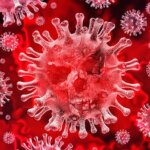A recent study conducted by a host of British academic institutions, including the University of Southampton, Liverpool Hope University, and University College London, has shined a spotlight on the gender differences of autistic patients.
Autism is a neurodevelopmental condition defined by impaired social interaction and repetitive patterns of behavior.
According to their new findings, released in the Journal of Autism and Developmental Disorders, female patients with autism are better than their male counterparts at what experts referred to as camouflaging their traits.
Camouflaging is characterized by strategies utilized to appear less autistic during social interactions with others.
“This study investigated sex/gender differences in camouflaging with 84 children and adolescents with and without an autism diagnosis/increased levels of autistic traits using two conceptualizations/operationalizations of camouflaging,” the co-authors stated in their findings.
Researchers determined that autistic females were more likely to initiate compensatory camouflaging, more so than autistic males.
“These findings provide evidence of increased camouflaging in autistic females, which may contribute to delay in the recognition of difficulties and provision of support,” the co-authors concluded in their journal article.
“To the researchers’ knowledge, this is only the second study to investigate camouflaging that has included child and adolescent participants with high autistic traits, without diagnoses.”


